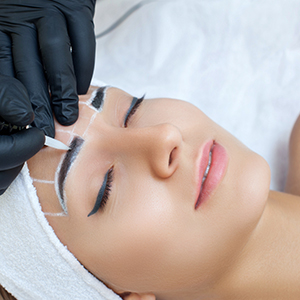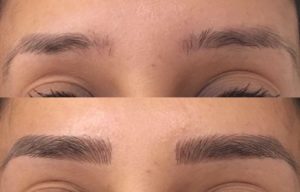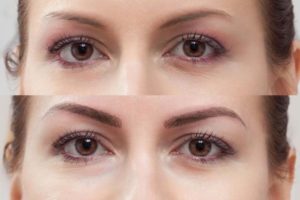Quick Links

Microblading – also known as eyebrow embroidery, micropigmentation, dermal implantation, microstroking, microfeathering, and 3-D eyebrows – is a semi-permanent make-up technique, and like any tattoo, pigment/ink will fade over time.
Compared with traditional tattoos that are done with a machine, microblading is performed manually using a disposable, single-use, sterile, handheld tool to deposit hair-like strokes of pigment into the dermis.
Permanent make-up machines are able to rapidly deposit pigment into the dermis, which limits bleeding and pigment expulsion and therefore fades at a slower rate.
Microblading is Used For: Eyebrow Shaping
How does Microblading work?
Microblading is a revolutionary technique that can transform the lives of patients with hypotrichosis of the eyebrows, trichotillomania, eyebrow loss due to internal disease (such as thyroid disease), chemotherapy-induced eyebrow loss, or alopecia – or simply those seeking it for cosmetic improvement.
The art of shaping the eyebrow depends on the natural growth of the brow (if any), facial symmetry, and meticulous measurement and mapping of the brow position based on facial landmarks and bone structure.
The color of pigment selection is based on Fitzpatrick’s skin type and skin color undertones.
What is the treatment like?
Microblading uses a specialized hand-held tool with a unique blade that deposits dye into the second dermal layer of the skin, creating very fine, precise strokes that mimic natural eyebrow hair.
How long will the results last?
With microblading, the pigment is placed more superficially in the skin, so results will last 6 months to a year making it an ideal treatment with this ever-changing eyebrow phenom that we are all obsessed with.
Is microblading painful?
There is little to no pain associated with microblading, especially if the brow area is numbed with lidocaine. Most patients describe the feeling of microblading to be similar to plucking.
What should I expect after treatment?
Healing can take 7-10 days. The pigment will appear very dark immediately after the procedure. There will be mild to moderate flaking, redness, and itching starting around day 4. Once healed, the color will have faded about 40-50% looking patchy and uneven. You will return in 4-6 weeks for your perfecting touch-up (included in your first treatment). This is crucial and necessary to obtain the best result possible. Avoid Botox® treatments for 4-6 weeks until touch-up is healed.





